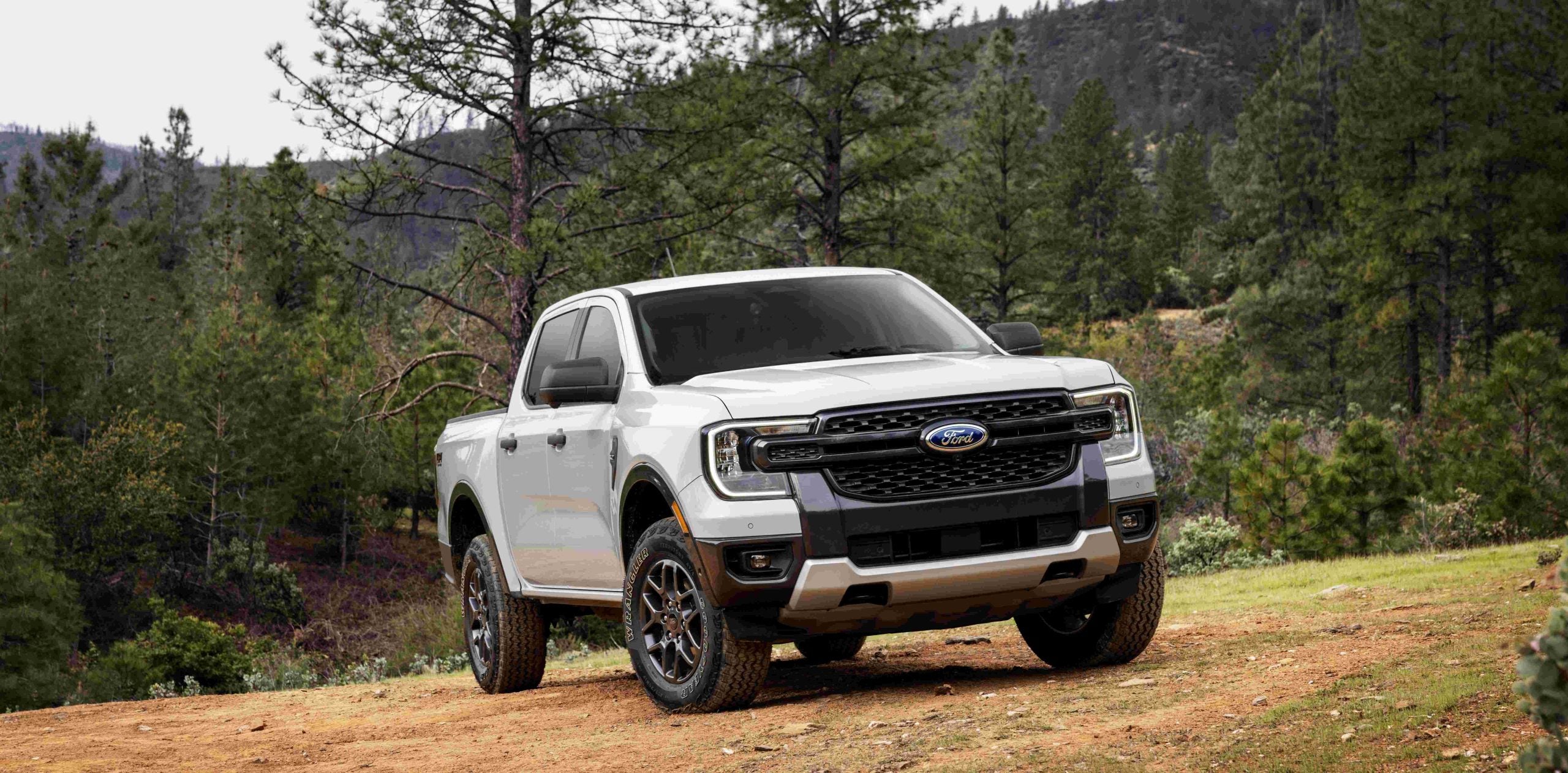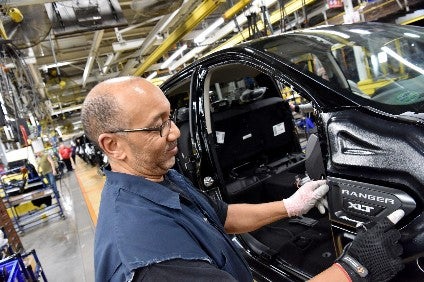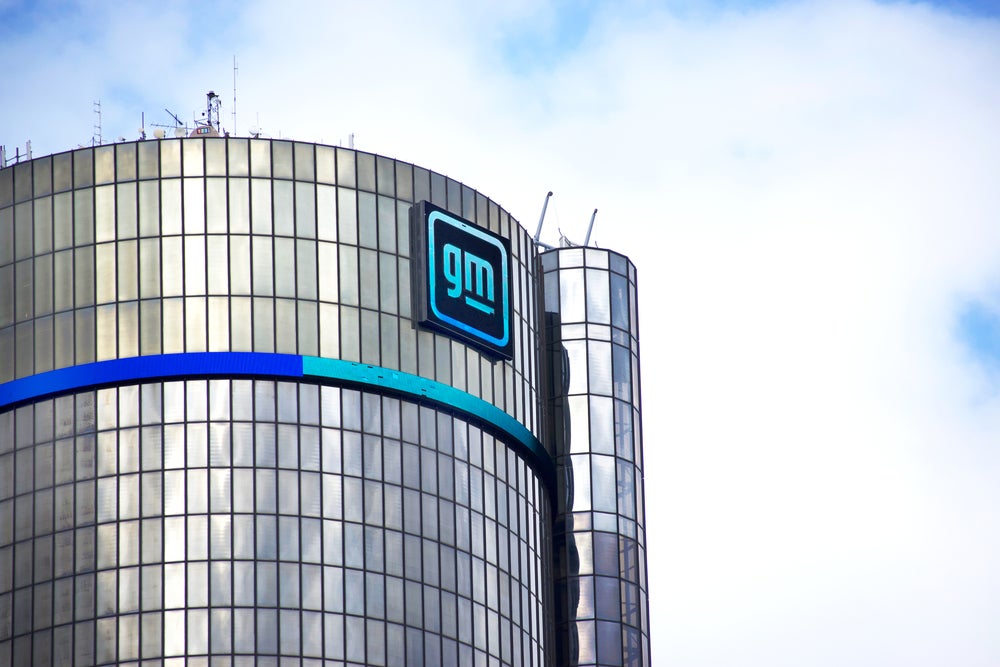
The United Auto Workers union launched simultaneous strikes at three General Motors, Ford and Stellantis factories on Friday (15 September), reportedly beginning the most ambitious US industrial labour action in decades.
Reuters said walkouts at the ‘Detroit Three’ would halt production of the Ford Bronco, Jeep Wrangler and Chevrolet Colorado pickup truck, along with other popular models.
“For the first time in our history we will strike all three of the Big Three,” UAW president Shawn Fain told the news agency, adding the union would hold off more costly company wide strikes for now but all options were open if new contracts were not agreed.
Reuters noted Fain had laid out plans for the walkouts on Facebook Live [a platform the UAW has been using during these contract negotiations – ed], less than two hours before the old contract expired at midnight EST.
The repport added the walkouts capped weeks of clashes between Fain and Detroit Three executives over union demands for a bigger share of profits generated by combustion trucks, and stronger job security as automakers shift to electric vehicles.
The standoff had become a political issue with President Joe Biden, facing re-election next year, calling for a deal.
Reuters said the strikes involving a combined 12,700 workers would take place at assembly plants operated by Ford in Wayne, Michigan, GM in Wentzville, Missouri and Stellantis’ Jeep operation in Toledo, Ohio. They were critical to the production of some of the automakers’ most profitable vehicles.
In the news agency’s view, Fain’s decision to go with targeted walkouts could limit the cost to the union of strike pay. The UAW has a US$825m strike fund which pales in comparison to billions in liquidity the automakers have built up thanks to healthy profits from trucks and SUVs UAW members build.
Stellantis has more than 90 days worth of Jeeps in stock, and has been building SUVs and trucks on overtime, Reuters noted, citing Cox Automotive.
A week long shutdown at the Jeep plant in Toledo could cut revenue by more than $380m, based on news agency assessment of data from Stellantis financial reports.
“This is more of a symbolic strike than an actual damaging one,” Sam Fiorani, a production forecaster at Auto Forecast Solutions told Reuters, adding he had expected more in the first wave of the strike.
“If the negotiations don’t go in a direction that Fain thinks is positive, we can fully expect a larger strike coming in a week or two.”
Fiorani estimated the limited action would stop production of about 24,000 vehicles a week. And while it targets some key brands, buyers would be willing to wait, for now.
In Wayne, Michigan, hundreds of people, including auto workers on the night shift and their supporters, gathered at a Ford assembly plant as the strike began, Reuters said.
Companies fret over cost hikes
The union had said it wanted a 40% raise. In response, the automakers have offered up to 20% but without key benefits demanded by the union. None of the Detroit Three has proposed eliminating tiered wage systems which require new hires to stay on the job for eight years to earn the same as veteran workers – a key UAW demand.
Ford told Reuters the UAW’s latest proposals would double its US labour costs and make it uncompetitive against Tesla and other non-union rivals [some southern US plants are not unionised – ed]. A walkout could mean that UAW profit sharing cheques for this year would be “decimated,” Ford added.
Stellantis told the news agency it had immediately gone into “contingency mode” and would take all appropriate structural decisions to protect the company and its North American operations, without elaborating.
Fain said earlier this week that Stellantis had proposed shutting as many as 18 US factories.
GM said it was disappointed by the walkout, and would continue to “bargain in good faith”.
Ahead of Fain’s address, GM’s top manufacturing executive Gerald Johnson had said in a video the UAW’s wage and benefits proposals would cost the automaker $100bn, “more than twice the value of all of General Motors and absolutely impossible to absorb.”
He did not detail how the union proposals would result in that cost, or over what time frame.
Fain has rejected the automakers’ assertions that union demands would cost too much saying the companies have spent billions on share buybacks and executive salaries.
Reuters said suppliers and other industries which depend on automakers and their workers could see demand and cash dry up if the UAW shuts down the Detroit Three’s US manufacturing operations.
Reuters noted Biden was pouring billions in federal subsidies into expanding sales of electric vehicles but the shift to EVs could threaten UAW combustion powertrain jobs. The union has not endorsed the president’s re-election.
“I think the Biden administration just continues to watch this slow-moving car crash as its EV strategy collides head on with unions,” Wedbush analyst Dan Ives told Reuters.
The news agency noted Fain had taken an unorthodox approach to the negotiations, bargaining with all three Detroit automakers simultaneously. Past UAW leaders chose one company to set a contract pattern for the other two. But Fain had played the companies against each other, seeking to drive up their offers.
While a deal with one or more of the automakers could come at any time, the disruption is an opportunity for non-union automakers in the US, including Tesla, Toyota, Honda and Mercedes.
Those non-union factories, plus imported vehicles, now account for over half the new vehicles sold in the US.
According to Reuters, Deutsche Bank has estimated a full strike would hit profits by about $400m to $500m at each affected automaker per week of lost production though some of those losses could be recouped by later boosting production schedules but that possibility would fade as a strike extends to weeks or months.




